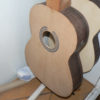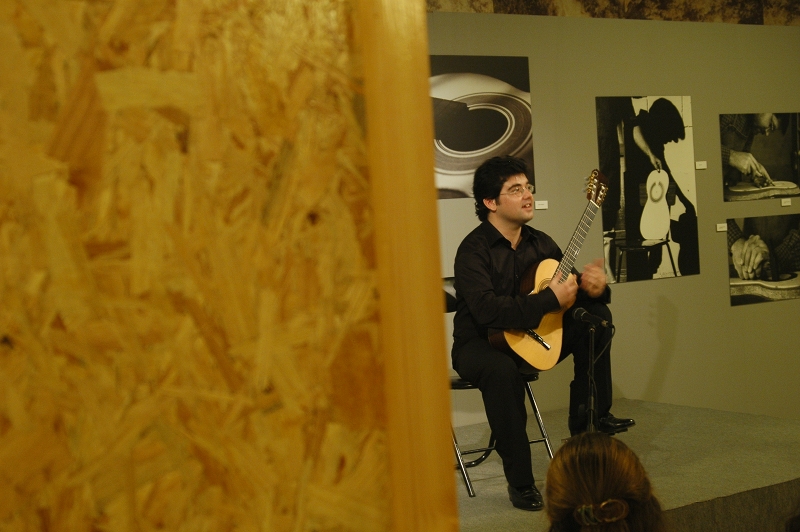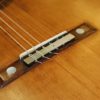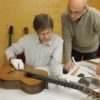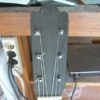I am filling an order for Casa Luthier in Barcelona and since they held the guitars of Rolf Eichinger in very high esteem I thought that this was the perfect opportunity to finish some of the work he left behind. In this case I am using a neck and a bridge that he prepared so I can’t really say that the guitar is not mine. I won’t be putting any indication on the label but the heel is firestamped on the inside with his initials as he used to do on all his work. The top bracing is different from his although the underlying ideas are the same, he had been using five fans almost exclusively for years. Every time I make a cedar guitar I think of Rolf because he is the one who taught me how you have to treat cedar in order to get a similar response to spruce as it can be very boomy otherwise.
on the inside with his initials as he used to do on all his work. The top bracing is different from his although the underlying ideas are the same, he had been using five fans almost exclusively for years. Every time I make a cedar guitar I think of Rolf because he is the one who taught me how you have to treat cedar in order to get a similar response to spruce as it can be very boomy otherwise.
Let me point out some “innovations” on Rolf’s bridges. Looking at the photo below you can see that the tie block has a slanted back side which allows for a lip while respecting the width of the tie block itself. The only advantage I can see to this is the sharper corner which helps to keep the strings from slipping. Of course you have to be more careful to bevel the corner so that strings don’t break. The other feature is a tipped-back saddle slot which is something he talked about when I first met him but never did until near the end. The advantage to this is that the higher the saddle the more compensation there is. The reasoning is that the higher the string is off the fretboard the more string compensation you need. I know, it is hard to see in the photo.
The other feature is a tipped-back saddle slot which is something he talked about when I first met him but never did until near the end. The advantage to this is that the higher the saddle the more compensation there is. The reasoning is that the higher the string is off the fretboard the more string compensation you need. I know, it is hard to see in the photo.
So this will basically look like one of my guitars except the headstock is different, the body measurements are not mine and the bridge has this funny look to it.
I also wanted to say that it is a real pleasure to once again make 4 concert guitars at the same time. I used to work that way and it is very efficient but between flamencos, the Torres copy, the new Arias copy and the romantic model it has literally been years since I have had 4 of the same model on the go.


